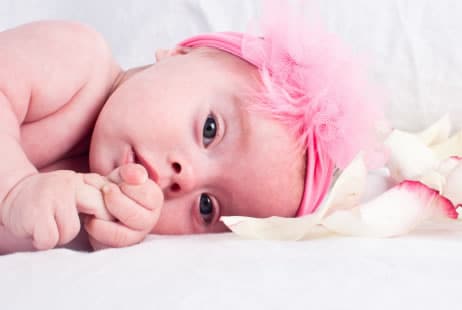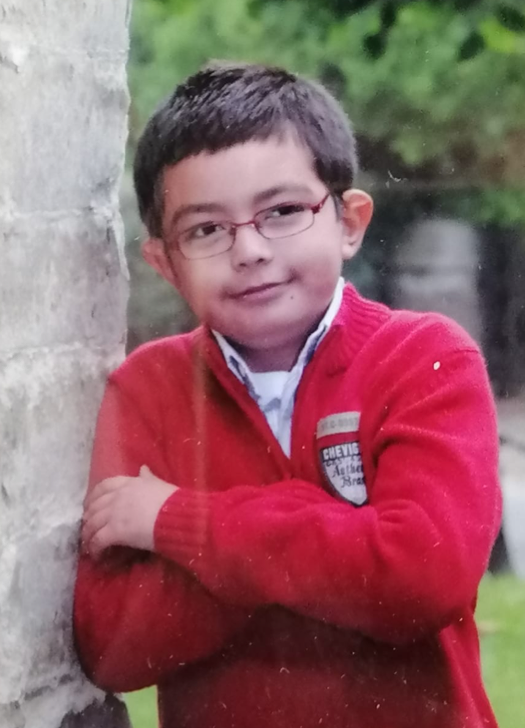Blindness to Seeing
Results: The only thing that matters in the world of hurt kids
At birth a newborn baby is blind: the baby can see light and dark and nothing more. This is the first stage and at this point the baby has only a light reflex.
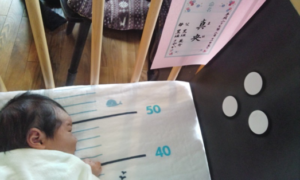
A newborn baby needs strong contrast: White dots on a black background provides appropriate stimulation for the newborn
As the baby matures the baby begins to see outline. This is the very beginning of seeing.
When a baby begins to see detail, this means the baby is beginning to have useful vision.
Injury to the brain either before, during or after delivery can result in blindness. This is because of injury to the visual pathway, not injury to the eye.
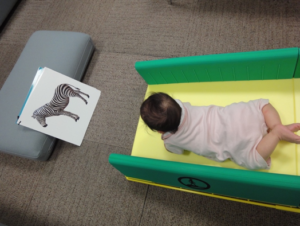
After visual stimulation the same baby only, weeks later is ready to see detail
Appropriate stimulation and opportunity are the answer when a sensory pathway is in trouble. When the visual pathway is provided with stimulation with increased frequency, intensity, and duration in recognition of the orderly way in which the brain develops, the visual pathway will grow. The child will begin to see light and dark, then outline, then detail. Once a child can see detail consistently then the child is no longer blind.
Clay

Clay was diagnosed with Spina Bifida in utero. At birth, he spent ten days in neonatal intensive care with supplemental oxygen. Genetic testing revealed an abnormal deletion, Phelan McDermid syndrome. Clay underwent surgery for hydrocephaly. At one year, Clay had limited vision, hearing, and mobility. He was on medication for infantile spasms. His parents learned of the What to Do About Your Brain-Injured course and attended it. Dad wrote “The course was more than I was expecting, my expectations changed each day. Everything taught was equally important … Looking forward to our appointment!” At Clay’s first appointment, at age 13 months, he was functionally blind and immobile, with only reflexive movement in his hands.

Today, age 3, after a home treatment program, Clay is seeing, beginning to read, understanding at his age level, using his hands, and even talking! He is off all medication and seizure-free. When asked to select his favorite subject he chose science. When asked what area, he said aloud “astronomy”. Wow. Clay is full of surprises right now.
Avery

After a long, difficult labor, Avery was born, and all seemed well at first. However, the baby slept a great deal, and by four months of age, parents became concerned that she had not met any expected milestones. At 9 months of age, an MRI was done, and Avery was diagnosed with periventricular leukomalacia. Avery began physical, occupational and speech therapy but after several months, her parents did not see any progress. At two years of age, Avery was blind, deaf, immobile, and in poor health. Avery’s mother and father attended the What to Do About Your Brain-Injured Child course at this time, and Avery had her first appointment six months later. Now, at three years of age, Avery is seeing, and enjoying photos of her family members, colorful pictures, and her first reading words. She is hearing, and understanding words and phrases, and making choices about her needs and desires. Avery has been in good health for eight months now, despite exposure to illness from her other family members. Mom, Dad, Grandmother, big brother, and big sister are her team at home, supporting Avery all the way, as she continues to progress intellectually, and physically now, too.
Samuel

Mother experienced a difficult labor with her baby in fetal distress, he was then delivered prematurely by emergency c-section. Samuel scored 0 on the Apgar 1-10, he was not breathing at birth and had no heartbeat. He was intubated in neonatal intensive care, provided oxygen, and received cardiac compressions to survive. During infancy, Samuel did not reach the expected milestones, and was diagnosed with cerebral palsy and microcephaly. Just before Samuel’s second birthday, his parents attended the What to Do About Your Brain-Injured Child course and came for a first appointment. Samuel was functionally blind and immobile when his parents embarked on the Intensive Treatment Program. Despite setbacks due to illness and a medication error, today, at four years of age, Samuel can see, and he has begun to read, in both English and Spanish. He enjoys being read to, interacting with his family, and his favorite people with whom he has a bond of mutual respect. With consistent good health, Samuel is expected to continue to advance above his age level intellectually, and make more progress moving independently, and using his hands, as well.
Each of these children were blind – a condition parents were told could not be changed and would be permanent. Now each of these children can see the world around them and enjoy that world. All three are beginning to read for the first time. The quality of their lives has changed immeasurably for the better. These results were brought about by the efforts of each family. Mother and Father, brothers and sisters and the child – all working together to give each child a fighting chance for a much better life.
Matteo
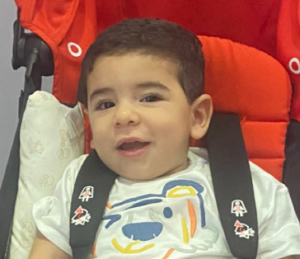
Matteo is from Venezuela, and at six months of age had aspiration pneumonia, and required emergency care, including a respirator and tube feeding. He was diagnosed with cerebral palsy. At eighteen months of age, it was clear Matteo was blind – he only had a light reflex. He did not understand words. He was unable to move, or use his hands. Matteo’s parents attended the What to Do About Your Brain-Injured Child course and began a treatment program at home. Four months later, at his first visit to The Institutes, Matteo had begun to see outline, and understand his first words. By age 3, after 18 months of a home program, Matteo is now able to see, identify pictures, and he has begun to read words, and simple sentences. He is following instructions, and beginning to crawl, and say his first words.
Emilia
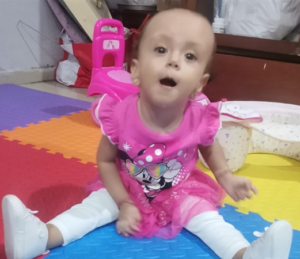
Emilia is from Peru; she was born by emergency c-section due to fetal distress. At five months of age, she had no head control, poor vision, and hearing. By age 16 months, it was clear that Emilia was blind. She had only outline perception. Her parents attended the What to Do About Your Brain-Injured Child course. They began a home program of sensory stimulation and motor opportunity. Eight months later at her first appointment at The Institutes, Emilia was able to see and recognize familiar faces, and identify pictures of objects and animals. Her understanding was now equal to her age, and she was following simple instructions.
Valeria
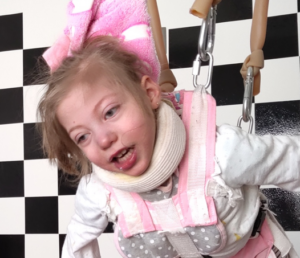
Valeria is from Mexico and suffered a stroke in utero. She was delivered prematurely by c-section and diagnosed with microcephaly and cerebral palsy as an infant. She had her first seizure at six months of age and began anti-convulsant medication. Valeria’s parents attended the What to Do About Your Brain-Injured Child course when she was 14 months of age. She was blind with only a light reflex, and they began a visual stimulation program at home. Valeria had her first appointment four months later. Only 10 months later Valeria was seeing detail, and able to recognize her family members in photographs. She was following instructions and able to communicate using a choice board. By 30 months of age, Valeria was reading more than 100 words, and her understanding was well above her age level. She is expressive, opinionated, and has a good sense of humor.

Each of these children were blind – a condition parents were told could not be changed and would be permanent. Now each of these children can see the world around them and enjoy that world. The quality of their lives has changed immeasurably for the better. These results were brought about by the efforts of each family. Mother and Father, brothers and sisters and the child – all working together to give each child a fighting chance for a much better life.
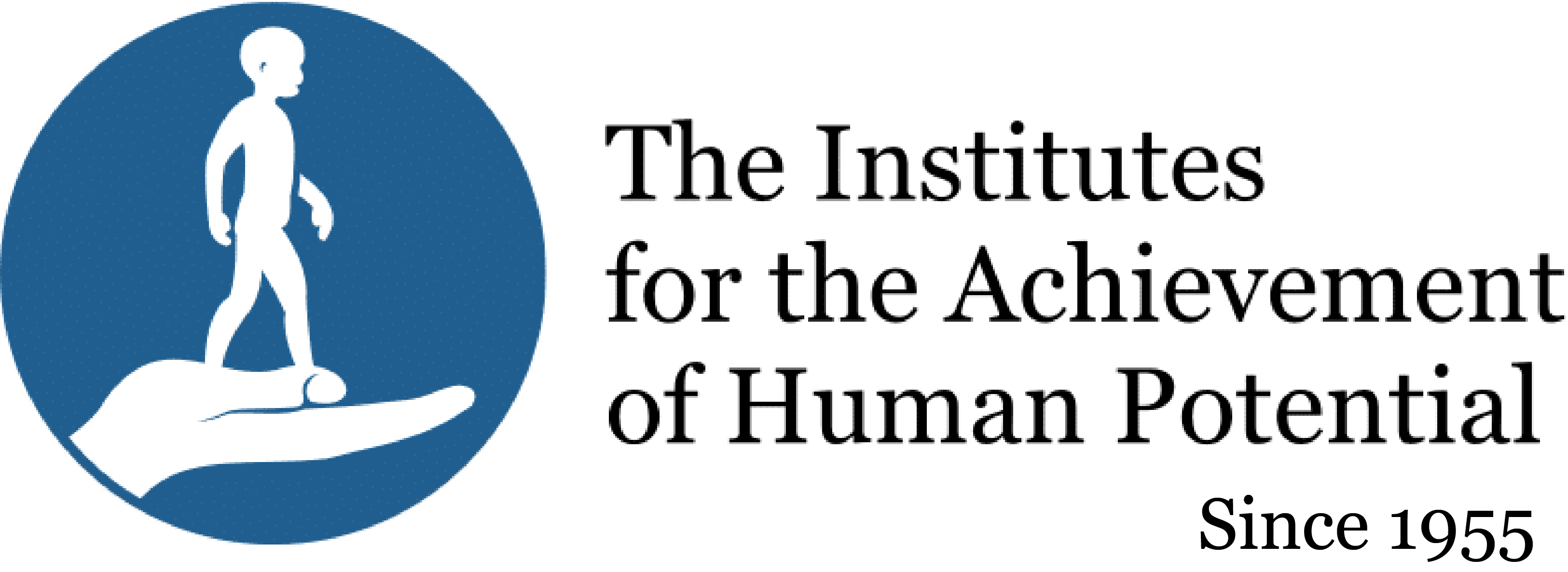
 Donate
Donate



